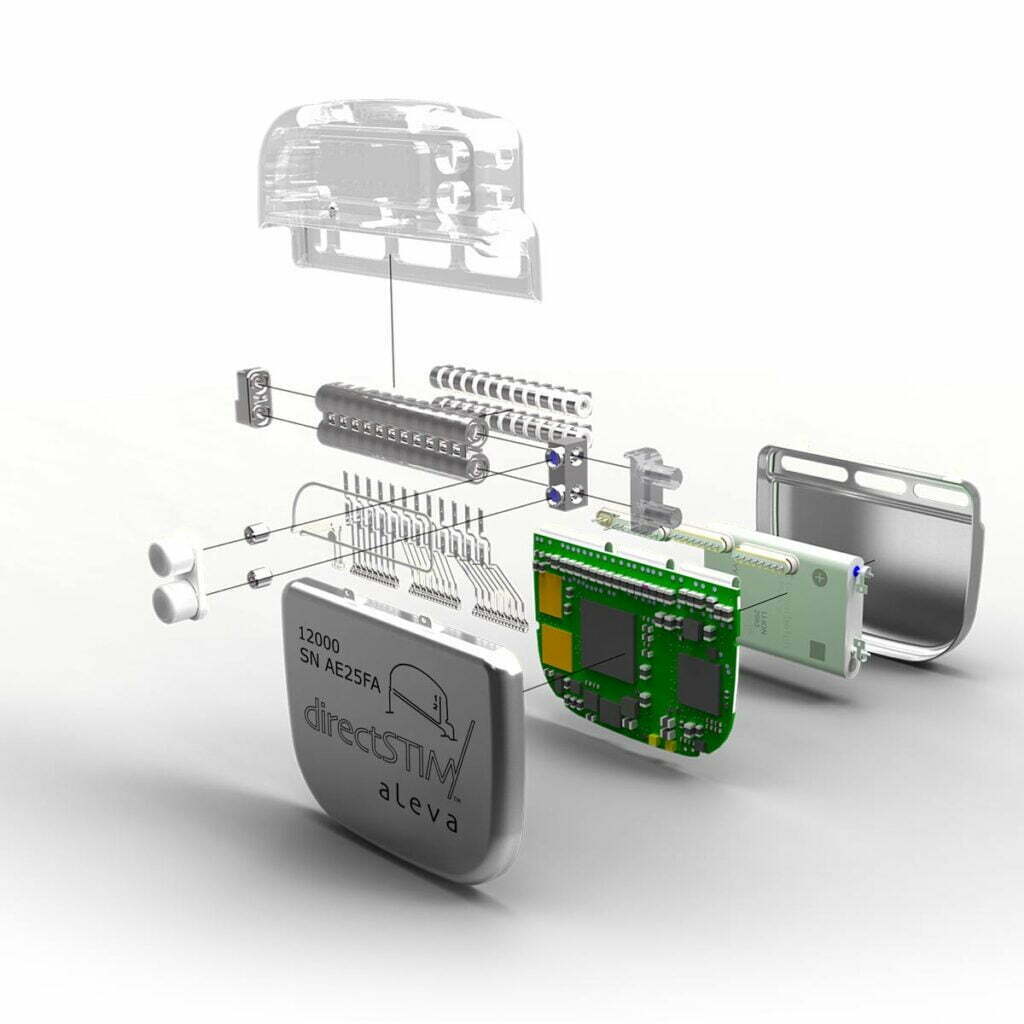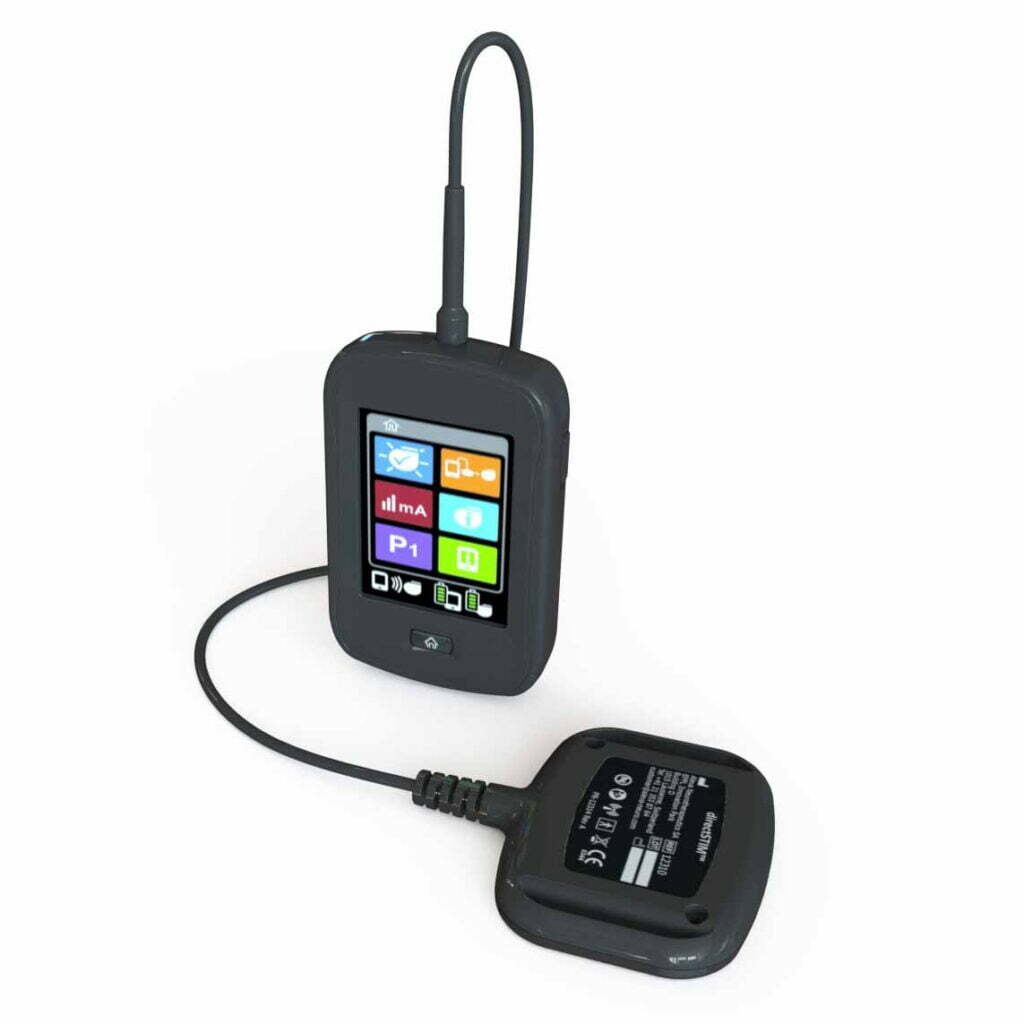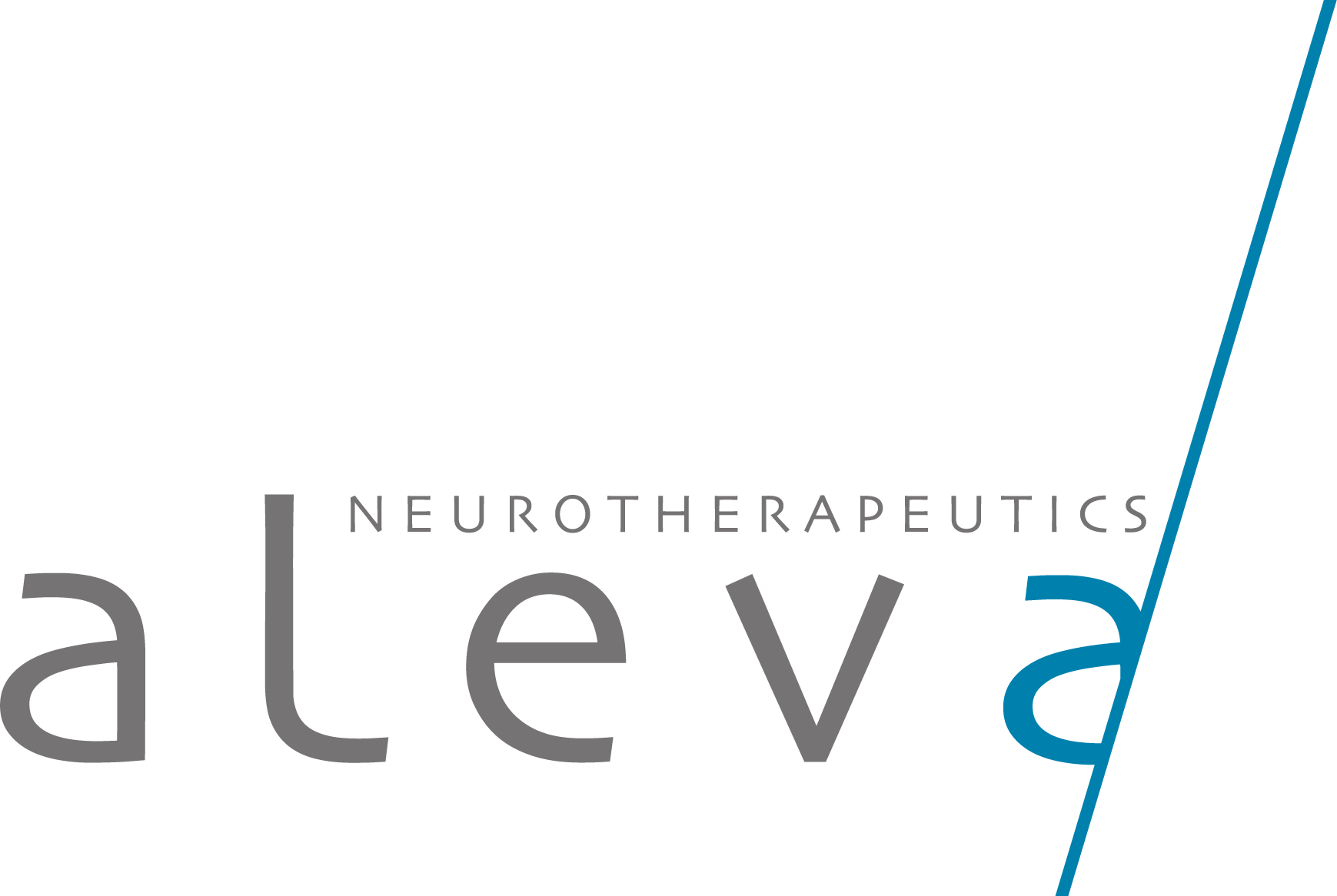directSTIM™ - UNIQUE BENEFITS
Aleva directSTIM™ CONTACT LEAD
Aleva’s next-level propriety leads are the foundation of the directSTIM™ system.
The design allows the physician to precisely control the direction and shape of the stimulation field, personalising the therapy and avoiding side effects, even in the presence of impedance variability.
Aleva directSTIM™ Contact Lead: The Highest Number of Directional Contacts:
- 4 levels of 3 independent rounded directional contacts at the distal end
- 4 segmented levels for a full 360-degree directional stimulation provided by 12 fully independent contacts per lead

Aleva directSTIM™ Contact Lead: Unique Rounded Contacts
The increased design flexibility made possible by the application of MEMS (Micro-Electro-Mechanical-System) technology enables Aleva to create a unique, rounded shape contact allowing a more homogeneous electrical field in line with the center of the contact.
Traditional squared directional contacts may exhibit a concentration of the electrical charge in the four corners, generating hotspots and potential overstimulation in undesired areas.
Aleva’s lead is designed to provide more precise and efficient stimulation of the targeted brain region with benefits of:
- Straighforward programming to personalise DBS therapy to the individual patient’s needs
- The same therapeutic results with a lower current amplitude.3
Aleva directSTIM™ Contact Lead: Allowing the Best Pre-Op Planning
Aleva’s unique 3-3-3-3 design provides the ability to implant the most distal level of contacts at the target, avoiding the need to implant the lead deeper to achieve directionality.
Furthermore, in the case of post-operative brain shift, having four levels of directional contacts increases the probability of maintaining continued directional therapy in the originally intended target.
Four levels of directional contacts increases the probability of maintaining continued directional therapy
Aleva directSTIM™ Contact Lead: Improving Post-Op Patient Management
ALEVA’s MEMS leads contain significantly less metal creating fewer image artefacts and distortion in both MRI and CT modalities allowing:
- Cleaner and more accurate reading of the CT scan
- Easier detection and visualisation of intracerebral haemorrhages (ICH)
This should lead to a reduced risk of untreated or undiagnosed post-op complications.


Aleva IPG – POWERING THE UNIQUE LEAD
Aleva’s IPG has the market’s highest number of independent current channels, offering the flexibility in programming and post-surgical correction.
- 24 current sources
- 15mA max amplitude per channel – 30mA in total
The combination of advanced technologies in the 24-channel IPG with 12-electrode lead increases precision and control of the stimulation, reducing the probability of inducing side effects. In the presence of varying impedances, each electrode can be independently programmed for a tailored and adaptable therapy.
This allows neurosurgeons greater surgical flexibility, and neurologists the ability to adapt the therapy to complex patients’ anatomy, resulting in a personalised program to reach optimal clinical results for each patient.
ONE DEVICE TO CONTROL STIMULATION
We aim to facilitate the patient experience by giving them full control of their stimulation with one easy to use device. Intuitive and with an ICON menu, this user-friendly device will enable patients to control their pre-programmed stimulation parameters and easily change the IPG when needed.


Aleva IPG – directSTIM™ Rechargeable
DBS signals originate from the implantable pulse generator which is implanted in the patient’s chest. The smaller the device, the more comfortable it is for the patient, significantly contributing to a better quality of life. ALEVA has one of the smallest rechargeable stimulator in the market.
directSTIM™ PROGRAMMER SPECIFICS
Aleva’s directSTIM™ Programmer is modular, wireless, and easily transportable. It incorporates intuitive programming software that allows quick and focussed patient programming in 5 steps.

The Clinical Landscape
Footnotes
3 T. A. Khoa Nguyen, Milan Djilas, Andreas Nowacki, André Mercanzini, Michael Schüpbach, Philipp Renaud, Claudio Pollo; Analysis of patient-specific stimulation with segmented leads in the subthalamic nucleus
PLOS ONE, June 19, 2019
